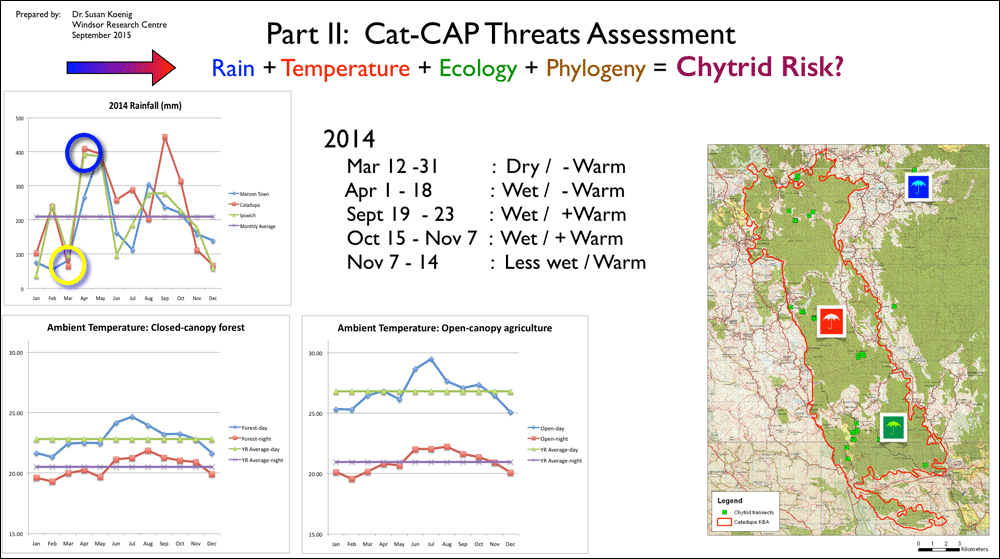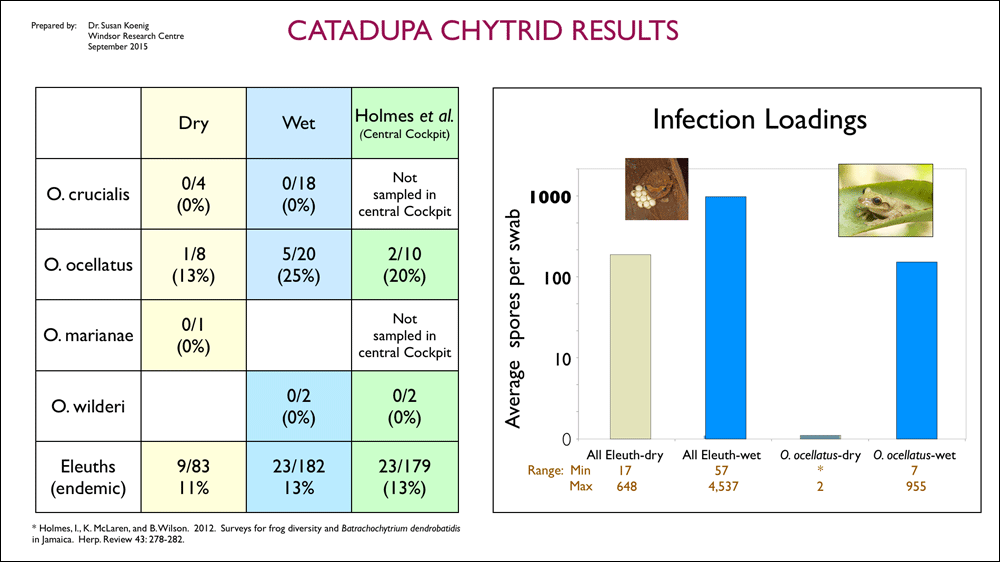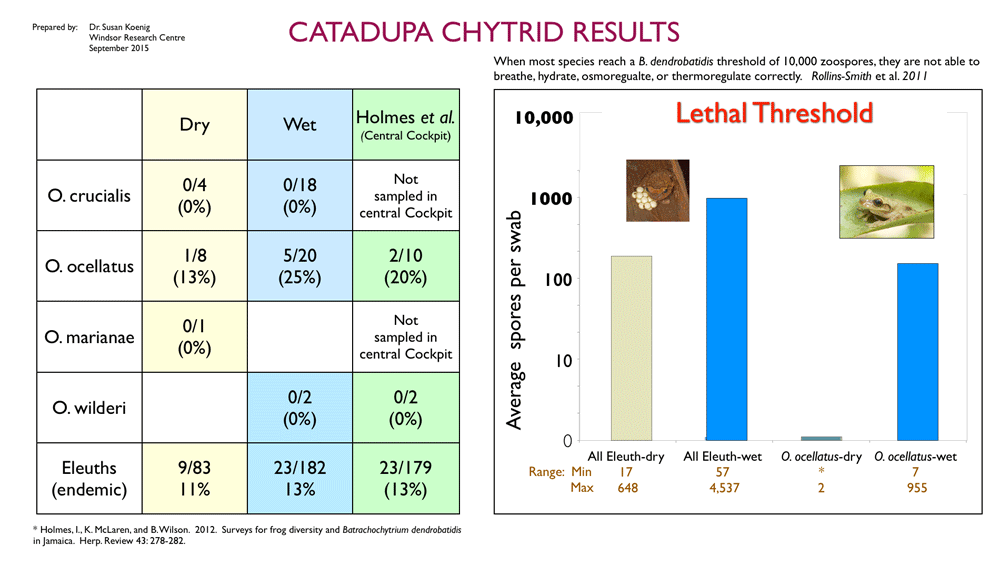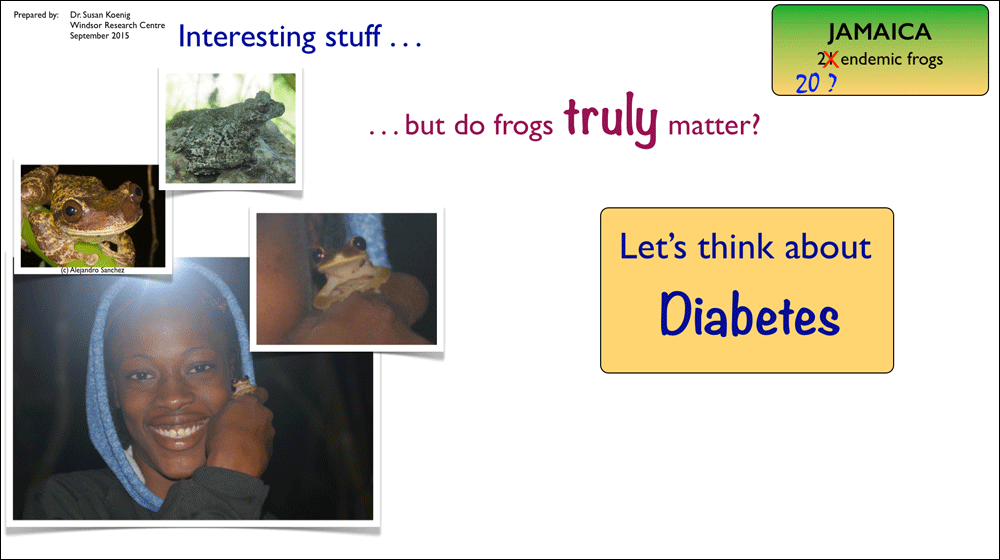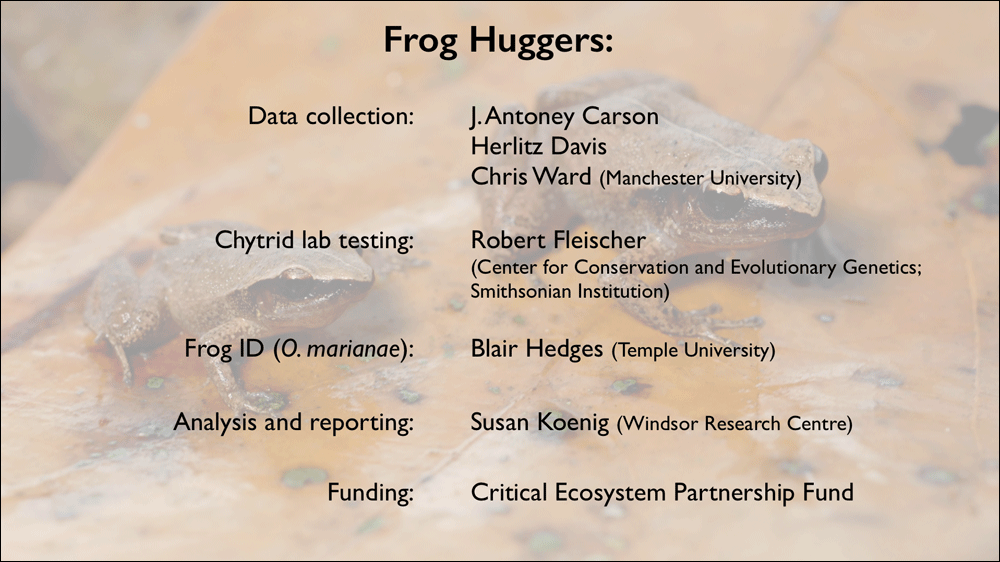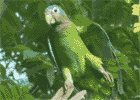For general information about chytrid, click here
See also our Chytrid Newsletter, "Catadupa Frogs, Singin' In The Rain"
In 2014, with the support of the Critical Ecosystem Partnership Fund, Windsor Research Centre conducted surveys to assess the status of chytridiomycosis ("chytrid) in the frog populations of the Catadupa Key Biodiversity Area (KBA). Individual frogs were captured by-hand (with researchers wearing protective covering on their hands) and each frog was rubbed with a cotton swab to collect any fungal spores which were present on their skin. These swabs were analyzed by Dr. Robert Fleisher's laboratory at the Smithsonian Institution's Center for Conservation and Evolutionary Genetics (Washington DC) so we could determine the prevalence (the percentage of infected individuals) and the level of infection (the number of zoospores per individual).
Along with chytrid sampling, we deployed dataloggers to monitor air temperature, relative humidity and rainfall - abiotic factors which influence the presence and abundance of fungal spores. Optimal growing conditions for chytrid-causing Batrachochytrium dendrobatidis (Bd) in 17-25 C.
Windsor Research Centre's Dr. Susan Koenig analyzed the results, which she presented to government agencies at our "Catadupa Conservation Action Planning (Cat-CAP) Workshop" in September 2015. Below are a series of slides summarizing the results.
All species of Eleutherodactylus ("Eleuths") were pooled for the analyses. The four species of Hylidae (Osteopilus spp.) ("Osteo") are presented individually. We draw particular attention to the discovery that no individuals of Osteopilus crucialis (Jamaican Snoring Frog) tested positive for chytrid. This species may have skin peptides - small proteins - which are highly effective at preventing or clearing fungal infectiions: clearly more research is needed!
We also draw attention to the fact that we did not definitively detect the Jamaican Bromeliad Frog (Eleutherodactylus jamaicensis). Holmes et al. (2012) also failed to detect it during island-wide surveys in 2010 and 2011, raising concerns over its vulnerability to chytrid. If anyone in Jamaica ever encounters a frog in or near a tank bromeliad ("wild pine") AND the frog exudes a BRIGHT BLUE SLIME from its sides and thighs to warn-off predators, let us know IMMEDIATELY!
Please email us if you'd like more information or have any questions about the field study.
Note: The photo of the Eleuth with the egg mass is Puerto Rico's Eleutherodactylus coqui, (c) Alejandro Sanchez. We used it as a reminder that this genus undergoes direct development in the egg, in contrast to the Hylidae which have a tadpole stage.
